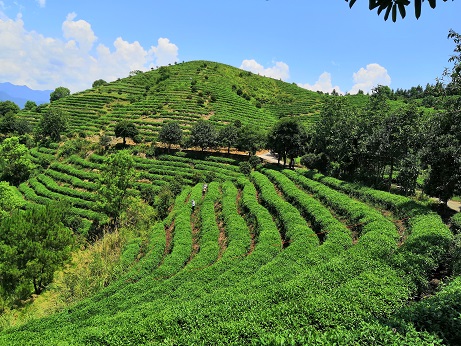China – low carbon towards carbon neutral tea production
FAO has been cooperating with the Chinese Academy of Agricultural Sciences (CAAS) to assess the potential of low carbon and carbon neutral approaches to tea production in China. Baseline data for GHG emissions and carbon sequestration were collected throughout the tea value chain at three pilot plots using a Life Cycle Assessment approach:
| Dabu | Longquan | Songyang |
|---|---|---|
| 4.47 kg CO₂-eq/kg | 4.12 kg CO₂-eq/kg | 7.75 kg CO₂-eq/kg |
Based on the calculated GHG emissions intensity, the study explored options and best practices for increasing climate resilience, reducing GHG emissions and enhancing carbon sequestration throughout the tea value chain. Furthermore, potential measures for offsetting any remaining emissions were discussed in order to make the tea production fully carbon neutral with the possibility to qualify for carbon neutral certification.
Low carbon practices preliminarily tested in China were:
- Reducing the application of fertilizers and pesticides.
- Enhancing carbon sequestration through improved photosynthesis and soil organic carbon.
- Improving agroforestry systems.

